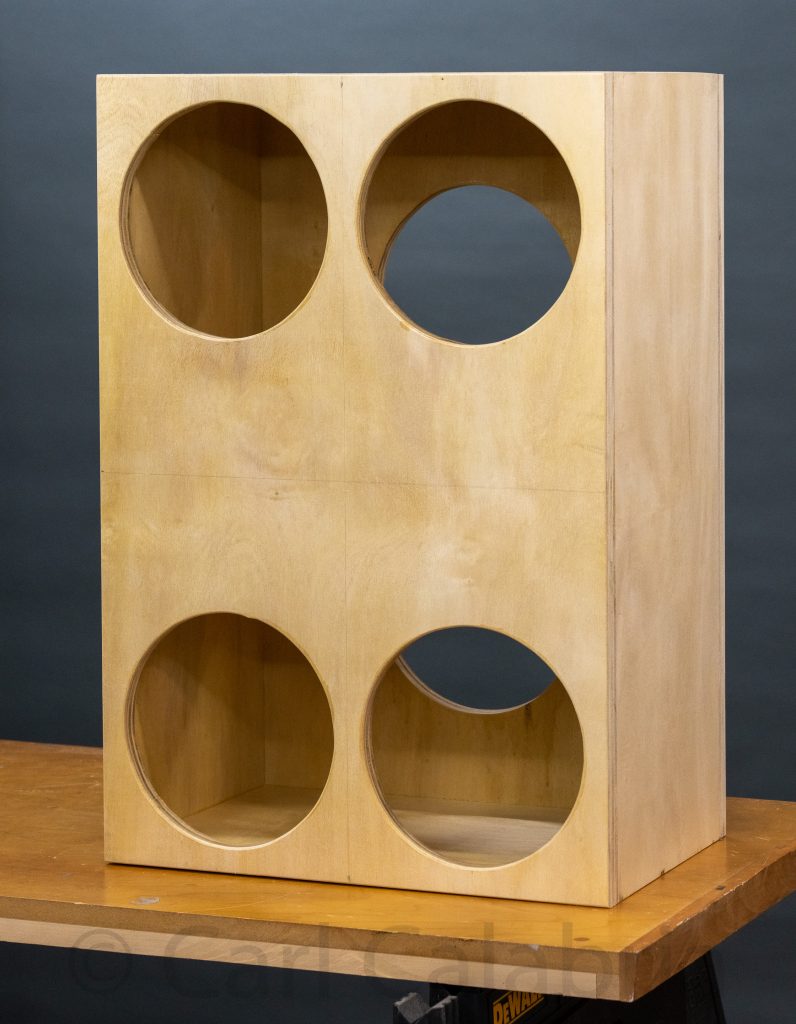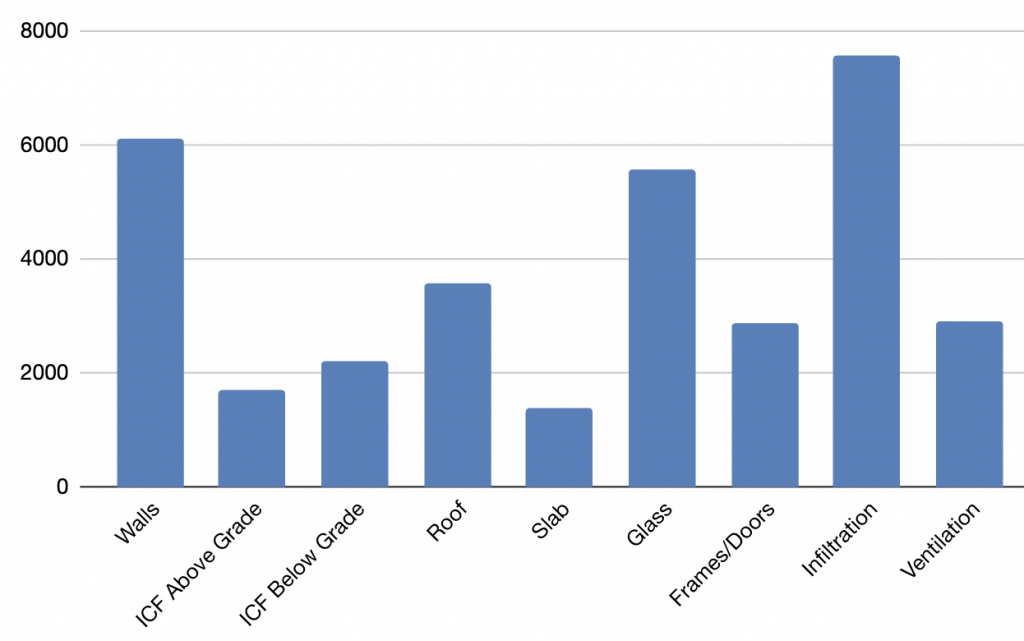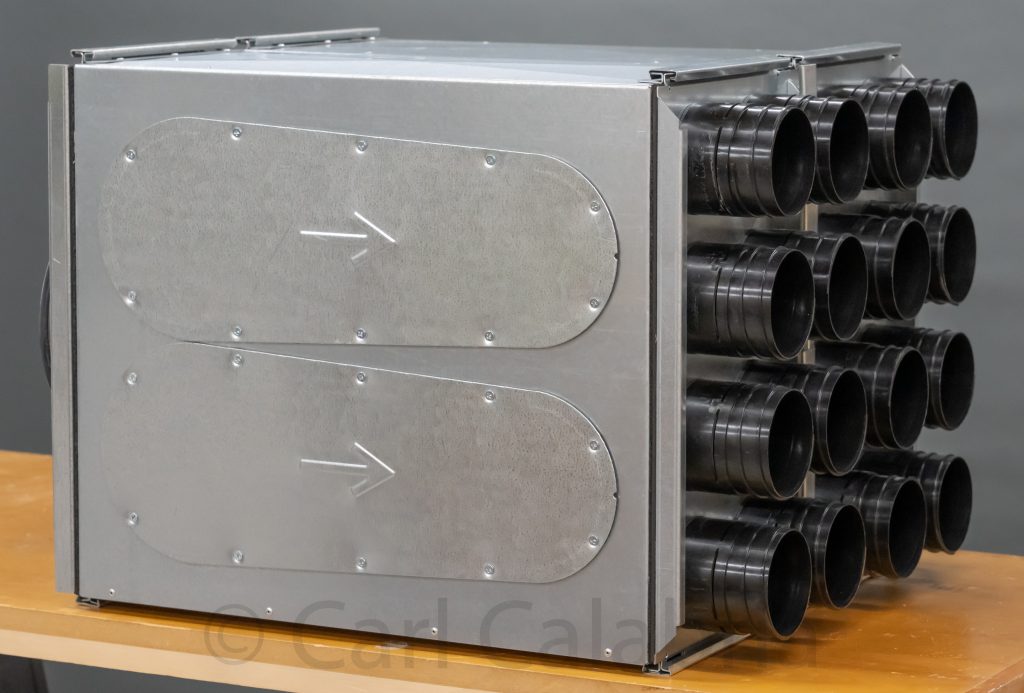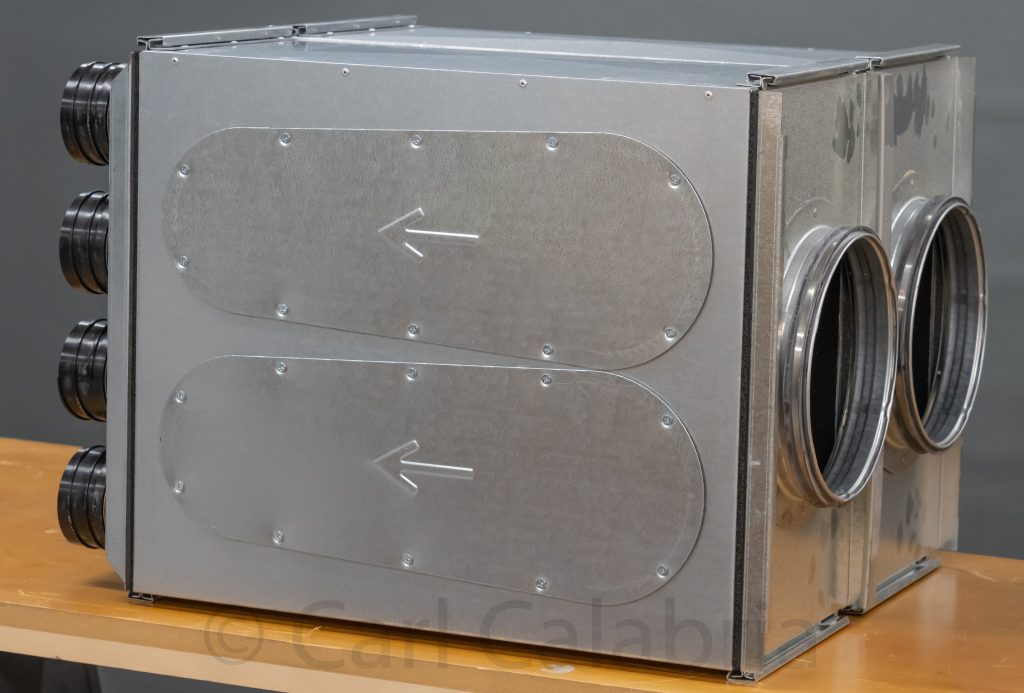
When I modeled the heating load for the River House, I was surprised to learn that air infiltration was the largest source of energy loss. I had assumed it would be the walls or windows. For this reason, we are building the tightest envelope possible. Doing so requires that we also incorporate a fresh air ventilation system. We have selected a Zehnder ERV which claims to recover 95% of the heat in the conditioned air which is exhausted from the house and transfer it to the incoming fresh air. The system will run 24/7 and is designed to move 200 CFM of air through the house. This will be distributed through 16 supply tubes and 16 exhaust tubes, each 3 inches in diameter.
Since the system will run continuously, we will be using a set of four silencers to keep fan noise to a minimum. Each silencer has an 8-inch port on one side and eight 3-inch ports on the other side. The system design requires that we connect the 8-inch ports of two silencers to the 8-inch port on the Zehnder (a wye connection). Typically, this would be done with galvanized metal pipes and fittings. This approach, however, results in a significant separation between the Zehnder and the silencers which in turn make for far less efficient routing of the 32 supply and exhaust tubes.
Instead, I opted to construct a plenum out of plywood to interconnect all of the 8-inch ports. It is a far more compact solution and also more cost-effective. The plenum should never be exposed to any significant moisture, but I coated all the inside surfaces with several coats of polyurethane just in case. I will probably paint the outside to match the silencers.



